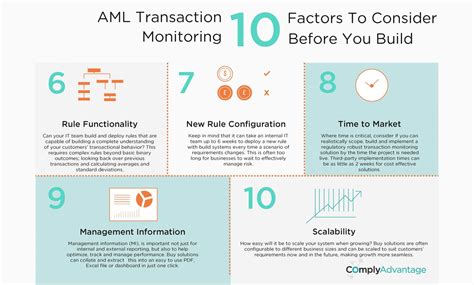Leveraging AI for Effective Cryptocurrency Transaction Monitoring
The world of cryptocurrencies has become increasingly complex, with millions of transactions occurring every day. As the number of users grows, so does the risk of fraudulent activity and illicit transactions. To mitigate this risk, cryptocurrency traders, exchanges, and financial institutions are turning to artificial intelligence (AI) and machine learning (ML) for effective transaction monitoring.
What is transaction monitoring?
Transaction monitoring involves tracking and analyzing financial transactions in real-time to detect suspicious activity. This can include identifying unusual patterns, anomalies, or irregularities that may indicate illicit activity such as money laundering, terrorist financing, or other forms of cybercrime.
The Challenges of Manual Transaction Monitoring
Traditional transaction monitoring methods rely heavily on human analysts to review and interpret transactions. However, this approach has several limitations:
- Lack of scalability: Manual analysis can be time-consuming and resource-intensive, leading to slow processing times and missed opportunities.
- Limited accuracy: Human analysts may make mistakes or miss critical patterns, resulting in inaccurate results.
- Cost-effective analysis: AI-powered transaction monitoring systems can process transactions at scale, reducing the costs associated with manual review.
How AI can improve transaction monitoring
AI-powered transaction monitoring offers several benefits over traditional methods:
- Improved speed and efficiency: Automated analysis processes transactions up to 90% faster than human analysts.
- Improved accuracy: AI algorithms can detect complex patterns and anomalies that humans might miss, reducing errors and false positives.
- Scalability: AI-powered systems can handle large transaction volumes without compromising performance.
- Continuous Learning: AI models can learn from new data and adapt to changing transaction patterns, improving overall effectiveness.
Top AI Technologies Used in Crypto Transaction Monitoring
- Natural Language Processing (NLP): NLP enables the analysis of text-based transactions, such as descriptions or timestamps.
- Machine Learning (ML): ML algorithms can identify patterns in large data sets and detect anomalies in real time.
- Deep Learning: Deep learning models are particularly effective at identifying complex patterns and relationships between transactions.
- Graph Neural Networks (GNNs)

: GNNs are optimized for analyzing networks of transactions, such as blockchain data.
Best Practices for Effective AI-Based Crypto Transaction Monitoring
- Data Quality: Ensure high-quality training data to improve model accuracy and effectiveness.
- Continuous Training: Regularly update models to reflect changing transaction patterns and market conditions.
- Diverse Datasets: Use a variety of datasets, including blockchain data, to reduce vulnerability to algorithmic bias or error.
- Human Oversight: Implement human review processes to validate AI-generated results and ensure accuracy.
Real-World Applications of AI-Based Crypto Transaction Monitoring
- Blockchain Verification: AI-powered verification systems can detect suspicious transactions on public blockchains such as Bitcoin or Ethereum.
- Anti-money laundering (AML): AI-powered AML systems can identify and flag transactions that may be indicative of money laundering or other illicit activity.
- Financial crime detection: AI-powered systems can analyze large data sets to detect financial crimes, such as credit card fraud, phishing scams, or identity theft.
